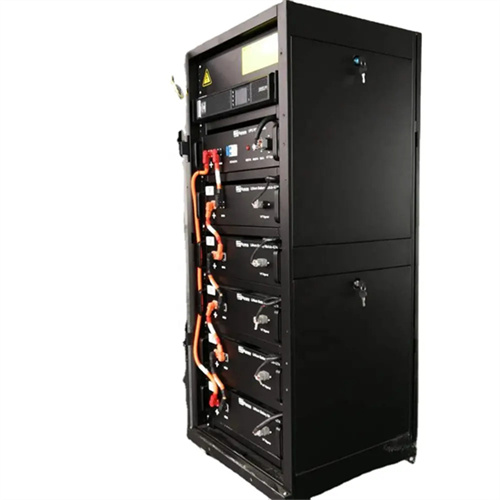Wind turbine blades not rotating

Aeroelastic analysis of a rotating wind turbine blade using a
In this paper, an aeroelastic analysis of a rotating wind turbine blade is performed by considering the effects of geometrical nonlinearities associated with large deflection of the

Study on the Rotation Effect on the Modal
With the large-scale development of wind turbines, large flexible blades bear heavier loads. In the actual rotating work of blades, the coupling of structural deformation and motion produces a dynamic stiffening effect and

Changing the rotational direction of a wind turbine under
Abstract. All current-day wind-turbine blades rotate in clockwise direction as seen from an upstream perspective. The choice of the rotational direction impacts the wake if the wind

Operational modal analysis for damage detection in a rotating wind
The detection of damage in (rotating) wind turbines, on the other hand, is still quite incipient and generally limited to large damage features. A proof-of-concept for crack

Study on the Rotation Effect on the Modal Performance of Wind Turbine
With the large-scale development of wind turbines, large flexible blades bear heavier loads. In the actual rotating work of blades, the coupling of structural deformation and

The Science Behind Wind Blades and How They Work
How Wind Blades Work. Wind turbine blades transform the wind''s kinetic energy into rotational energy, which is then used to produce power. The fundamental mechanics of wind turbines is straightforward: as the wind

Why Do (Most) Wind Turbines Have 3 Blades? Aerodynamics Explained
The larger the wind turbine, the faster the blade tip speed will be for a given rotational speed. If you consider a turbine rotating at 40rpm (1.5 seconds for a full rotation),

Study on the Rotation Effect on the Modal
When wind turbine blades rotate at a certain angular speed in practical work, the coupling of the deformation and motion of slender flexible elastomer structures leads to dynamic stiffening and spin softening effects,

Changing the rotational direction of a wind turbine
All current-day wind-turbine blades rotate in clockwise direction as seen from an upstream perspective. The choice of the rotational direction impacts the wake if the wind profile changes direction with height. Here, we investigate the

Turbine blade
In a gas turbine engine, a single turbine stage is made up of a rotating disk that holds many turbine blades and a stationary ring of nozzle guide vanes in front of the blades. The turbine is connected to a compressor using a shaft (the

6 FAQs about [Wind turbine blades not rotating]
Are wind turbine blades rotating or non-rotating?
While testing of non-rotating blades can predict the location and mechanism of blade failure, wind turbines are rotating machines. The rotational effect not only generates stress stiffening in the blade but also introduces Coriolis forces that subject the blade to more complex loads.
Why do wind turbine blades rotate at a certain angular speed?
When wind turbine blades rotate at a certain angular speed in practical work, the coupling of the deformation and motion of slender flexible elastomer structures leads to dynamic stiffening and spin softening effects, which further affect the dynamic characteristics of the blades.
Why do wind turbine blades have a stiffening effect?
With the large-scale development of wind turbines, large flexible blades bear heavier loads. In the actual rotating work of blades, the coupling of structural deformation and motion produces a dynamic stiffening effect and spin softening effect, which affects the dynamic characteristics of blades.
Why does a wind turbine wake rotate opposite to a turbine blade?
The wake rotates opposite to the blade rotation due to aerodynamics and design of the wind-turbine blades ( Zhang et al. , 2012). In contrast, the rotational direction of the far wake is determined by the Ekman spiral.
Do wind turbines use horizontal axis rotors?
The review provides a complete picture of wind turbine blade design and shows the dominance of modern turbines almost exclusive use of horizontal axis rotors. The aerodynamic design principles for a modern wind turbine blade are detailed, including blade plan shape/quantity, aerofoil selection and optimal attack angles.
Which part of a wind turbine is more prone to failure?
The fatigue failure susceptible region of the rotating blade is more accurately identified. Except for the 0.10 R position, the blade 1P component 0.70–0.75 R spanwise region is more prone to failure. The rotation speed increases the dynamic fluctuation of spanwise strain. The blade is one of the core components of a wind turbine.
Related Contents
- Film laying for wind turbine blades
- Transporting wind blades Wind turbine blades
- There are several shapes of wind turbine blades
- Is it easy to repair wind turbine blades
- How long are the blades of a 2 2mw wind turbine
- Homemade wind turbine fan blades
- The folding principle of wind turbine blades
- How to disassemble wind turbine blades
- Modify your own wind turbine blades
- Homemade wooden wind turbine blades
- The wind turbine blades are broken
- How much does a Wind Cube wind turbine cost